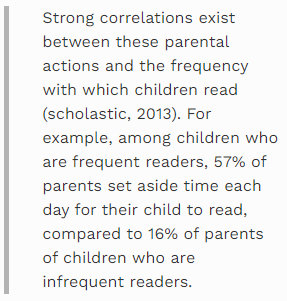Leading with Literacy – useful ideas to improve children’s literacy at school and home

Since my early days as a teacher over 20 years ago, getting students to read more, and to read with understanding, has been a personal mission. With research showing that reading for pleasure has dropped by 10% over the past four years, and that most adolescents aren’t reading, how can parents and teachers help to promote a love (or at least a ‘like’) for reading? Here are some issues and tips surrounding reading:
The worrying ‘decline by nine’
Data from a 2019 study by the Kids and Family Reading Report, found the percentage of children defined as frequent readers (reading books for fun 5–7 days a week) drops from 57% among 8-year-olds to 35% among 9-year-olds. The data also shows a drop between ages eight and nine in the number of students who say they love reading (from 40% to 28%), as well as the percentage of kids who think reading books for fun is important (from 65% to 57%).
A child’s attitude towards reading enjoyment and importance is a predictor of reading frequency. It is worrying that many children are losing their connection to reading when they need it most, in fourth grade. There are a number of powerful predictors why this occurs but the main reason is that texts become more difficult. To keep up, 9-year-olds have to be able to decode words, comprehend sentences and make inferences about what paragraphs mean. If they can’t, they get frustrated fast. At this point, parents and teachers need to find ways to motivate kids to keep reading: reward systems, access to books/magazines/comics, positive peer influences with reading and building on student’s subject-area knowledge (thus building on their vocabularies).
Ebooks are not always the page-turner
Our supposedly tech-addicted kids can still be bookworms. When e-readers hit the market over 10 years ago, they were mostly for reading and used eye-friendly text on backgrounds that replicated paper. However, as technology has improved, there is internet connectivity and other features (such as music playback) and links so that they are now more like tablets rather than books. The benefit of hard copy books is that they offer one purpose – to read – without added distractions. Used together though, both the e-reading experience and hard copy versions provide variety for children.
Kids need help finding books
Infrequent readers are going to find this more of a challenge than frequent readers. Again, the age of ‘nine’ seems to be when this problem increases. School librarians are some of my favourite people and they are a wealth of knowledge of authors/genres/topics. Read our article on How Teacher Librarians Boost Literacy. Ask your librarian for suggestions to keep your child motivated.
Books in the home and classroom

Reading every day has long-lasting benefits
“I wish my children would do more things that did not involve screen time.” Electronic devices may be pulling children away from books but don’t use this as an excuse. Parents can encourage reading by keeping print books in the home, reading themselves, and setting aside time daily for their children to read. We can’t stress enough the value of a large home library (borrow from your library – it’s free) and having parents involved in their child’s reading habits. Both factors will foster reading enjoyment and lead to reading improvement. If technology is your child’s currency, reading for 30 minutes can be a prerequisite to video game time/phone access.
Schools and teachers can develop a strong reading culture in their classrooms. Working with teacher librarians to place a focus on quality texts, holding reading challenges over the holidays (click here for our Reading challenge checklist – ready to print) and reading outdoors are some examples to promote reading. Our blog Literacy Toolkit – some fresh ideas to inspire your students to read, published earlier this year, was very popular with teachers and educators.
Reading role models are essential
Everyone in a child’s life – parents, grandparents, older siblings, teachers, principals — can be a reading role model. It’s up to us all to provide them access to books, be readers ourselves, ask and answer questions about what a child is reading and read aloud together.
If a child knows that the people around them value reading, then this stimulates a culture of literacy in our homes, in our classrooms and in our schools.
Looking to teach literacy in a more innovative and engaging way? We have a solution for teachers and parents.
Our passion to engage boys with reading led to developing a unique online resource. Literacy for Boys is the only program of its kind developed specifically for boys, their needs and how best to appeal to them. It is aligned with the Australian curriculum and covers the basics of reading comprehension, grammar, spelling and punctuation. Our topics cater for all boys’ interests – sport, science, adventure, true-life stories, forensics, tech gadgets, ghost stories, gaming and more. Our formula for success lies in building confident readers via engaging content.
Parent and teacher feedback has been overwhelmingly positive with 100% of our schools renewing their subscriptions in 2020.
We are offering a FREE 2 week trial of Literacy for Boys. Try it for yourself and see how it works for your class and children (8 years to 15 years). Contact us today: info@literacyforboys.com.au
Check out our blogs for more ideas and tips.
Noticed gaps in your child’s learning since remote learning? We offer the solution
Boys don’t read enough: changing the non-reading mindset
How LFB is gaining real results in improving literacy
Boys Love LFB – Here’s what they have to say!
Get boys reading in the digital age
Why write? Tips for reluctant writers
Brought to you by Tanya Grambower
